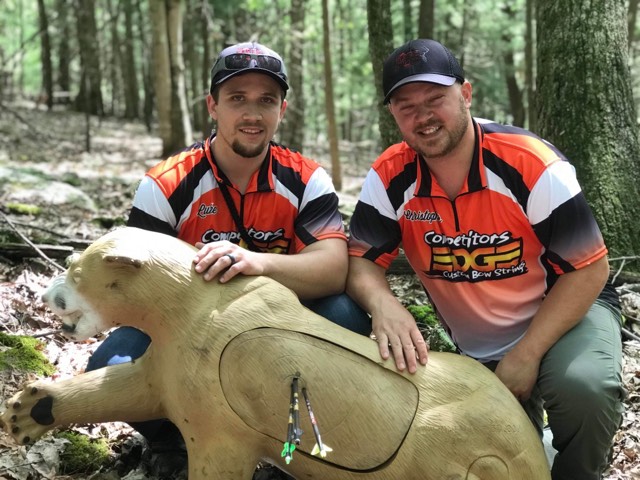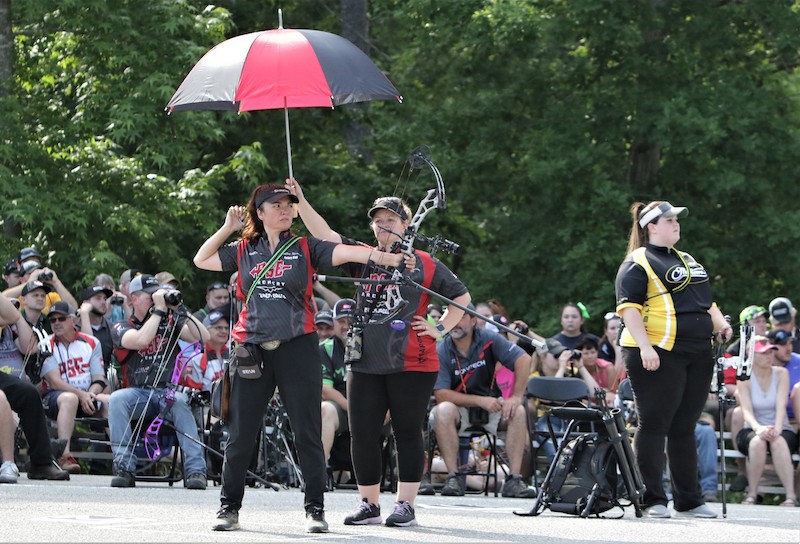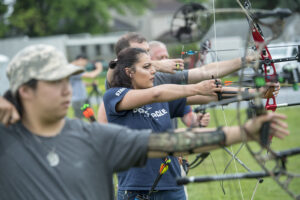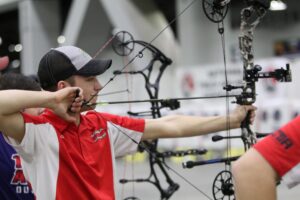Most archery ranges are flat, with targets set at exact distances. In contrast, 3D archery ranges are set inside woods, with targets set at varying angles and distances that create endless varieties of fun with bows and arrow.
The 3D discipline gets its name from the three-dimensional animal targets that challenge archers at each station. These targets range from small skunks to massive elk, and are set along a course connected to hiking trails.
Each target helps create different shooting scenarios. You might shoot downhill at a deer target in a brushy thicket, and then walk a few steps to shoot at an alligator in a swamp. Each station mimics one of the countless scenarios bowhunters face in the field.
Those setups create realistic bowhunting practice, but 3D archery isn’t just for hunters. It’s exciting for all archers because no two shots are the same, and it’s best played in groups.
The two largest 3D organizations are the International Bowhunting Organization and the Archery Shooters Association. These organizations hold tournaments throughout the country at clubs, ranges and even ski resorts. When you attend a 3D shoot you must know how to score the targets. Let’s review these organizations’ scoring systems.
IBO Scoring

The IBO’s scoring rings are worth 11, 10, 8 and 5 points. The smallest center circle is worth 11 points. The next largest ring is 10 points. The biggest scoring ring is 8 points. Arrows hitting the target anywhere outside the 8 ring score 5 points. If you miss the target you score 0 points.
ASA Scoring

The 5, 8 and 10 rings on ASA targets are the same as the IBO target. ASA, however, adds a few twists with its 12 and 14 rings. It has two 12 rings inside the 10 ring, one on the upper edge and the other on the bottom edge. The bottom 12 ring is the default, but you can shoot at the upper 12 ring if you call it before shooting.
Archers must tell the rest of their group they’re going for the upper 12. That’s advantageous when the bottom 12 ring gets packed with arrows. ASA targets also have a 14 ring in the 8 ring’s upper corner. This ring isn’t always in play, but when it is you must call it to earn the extra points. If you’re unsure the 14 ring is in play, ask the shoot’s organizer.
What are 3D Shoots Like?

When you arrive at a 3D shoot, go to its registration area to pay your entry fee and sign some forms. You’ll shoot the course with three other archers. Two of them will keep score, one will call out the scores, and the other will pull the arrows from the target.
After registering, visit the practice range to warm up and verify your sights are set. Once you’re warmed up, hit the course with your group.
Before shooting, you must decide the shooting order. That’s done several ways, but the most common is for one person to collect the scorecards, shuffle them and fan them out face down. Another group member randomly picks the cards one at a time. The order in which the cards are chosen sets the shooting order, which rotates after each target. If you shoot first, on the next target you’ll shoot second. Then you’ll shoot third on the next target, then last and back to the first. Rotating the order keeps the field even because shooting last lets you use other arrows in the target to help you aim.
The first target has stakes or small flags with different colors. These stakes at each target designate shooting positions. Most 3D courses put stakes at various distances to accommodate different equipment and age classes. You’ll learn which stake to use when registering.
You’ll shoot one arrow from the stake at the target. Once everyone in your group shoots one arrow, you walk to the target, score and pull your arrows. The group then moves to the next target. This process continues throughout the course, which usually has 30 targets.
Are you ready to try 3D archery? You’ll find several websites that list 3D shoots, and nearby archery shops can always help you find one. To contact a shop near you, click here.



